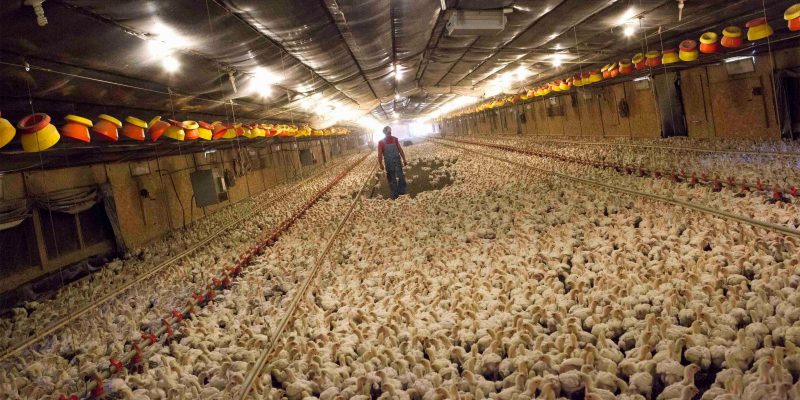
How Much Land is Needed to Start a Poultry Farm with 10,000 Chickens?
Starting a poultry farm with 10,000 chickens is a profitable business that can yield significant profits if done correctly. However, one of the most pressing questions for potential poultry farmers is: how much land is required to sustain such a flock? The amount of land needed is influenced by various factors, including the type of poultry farming system chosen, local regulations, and overall farm management practices. In this article, we’ll explore these aspects in detail to help you understand how to effectively plan for your poultry farming.
Types of Poultry Farming Systems
The first step in determining how much land is needed to start a poultry farm with 10,000 chickens is understanding the different types of poultry farming systems available. The three main systems are:
- Conventional Cage Systems: This method places chickens in cages, allowing for higher density and easier management. Each bird typically requires about 1 square foot of space. For 10,000 chickens, this would mean around 10,000 square feet of land dedicated to housing.
- Cage-Free Systems: In this setup, chickens are kept indoors without cages but still have limited space. Generally, each bird requires about 1.5 to 2 square feet. This translates to approximately 15,000 to 20,000 square feet of land with 10,000 chickens.
- Free-Range Systems: Free-range farming allows chickens access to outdoor spaces along with indoor housing. For this more humane approach, farmers should allocate about 5 to 10 square feet per chicken, resulting in a total land requirement of 50,000 to 100,000 square feet for 10,000 chickens.
Understanding which system aligns with your goals and values will significantly impact the total land required for your poultry farm.
Designing the Layout of Your Poultry Farm
Once you’ve determined how much land you need and ensured compliance with local regulations, the next crucial step is designing the layout of your poultry farm. A well-thought-out design maximizes efficiency while maintaining the health and welfare of your chickens. Here are key considerations for your layout:
Chicken Housing
The housing structure will likely consume a significant portion of your land with 10,000 chickens. Depending on the system selected (conventional, cage-free, or free-range), your housing needs will vary. Ensure that your coop provides adequate ventilation, natural light, and protection from predators. It’s also vital to create a clean environment to prevent disease outbreaks.
Feed and Water Stations
Properly planned feed and water stations are critical for your flock’s well-being. These stations should be strategically placed to avoid overcrowding during feeding times, ensuring all chickens have equal access to resources.
Waste Management Areas
Effective waste management is crucial for maintaining hygiene on your farm. Designate specific areas for manure disposal, composting, or storage that comply with local regulations to minimize environmental impact.
Best Practices for Managing Your Poultry Farm
To successfully manage a poultry farm with 10,000 chickens, adhering to best practices is essential. Here are several strategies to consider:
Implement Biosecurity Measures
Biosecurity measures protect your chickens from diseases and infections. Establish protocols for controlling access to your farm, disinfecting equipment, and monitoring incoming animals. Regular health checks are also essential for early detection of any health issues.
Nutritional Requirements
Providing a balanced diet tailored to the age and production stage of your chickens is vital. Work with a poultry nutritionist to formulate feeding programs that ensure your chickens meet their nutritional needs, ultimately impacting growth rates and egg production.
Record Keeping and Monitoring
Establishing detailed records of your chicken’s health, feeding schedules, and growth metrics will serve as valuable tools for improving operations. Regularly assessing these records can help identify areas for improvement and inform future decisions.
Community Engagement
Lastly, engaging with your local community can yield benefits for your poultry operation. Attend agricultural fairs, network with other farmers, and consider participating in local markets. Building relationships within your community can create opportunities for collaboration and support.
Conclusion: Planning for Success in Poultry Farming
In conclusion, starting a poultry farm with 10,000 chickens is a significant undertaking that requires careful planning and consideration. The amount of land you need will depend on various factors, including the type of farming system you choose, and your overall management practices.
Summary of Key Points
- Poultry Farming Systems: Choose between conventional cage systems, cage-free, or free-range systems to determine how much land is needed for housing and outdoor space. Each system has different space requirements, influencing total land needs.
- Farm Layout: A well-planned layout maximizes efficiency and animal welfare. Prioritize proper chicken housing, adequate feeding and watering stations, and designated waste management areas to maintain hygiene and health standards.
- Best Practices: Implement biosecurity measures, provide balanced nutrition, maintain detailed records, and engage with the community. These strategies are vital for a successful poultry operation and can lead to long-term sustainability and profitability.
Final Thoughts
Investing in a poultry farm with 10,000 chickens offers the potential for lucrative returns if approached thoughtfully. By understanding how much land is necessary and adhering to best practices, you can create a thriving environment for your flock while meeting regulatory requirements.
Ultimately, starting a poultry farm is about more than just the land with 10,000 chickens; it’s about fostering an environment where both your chickens and your business can flourish. With dedication, research, and proper planning, you’ll be well on your way to establishing a successful poultry operation that can stand the test of time.


